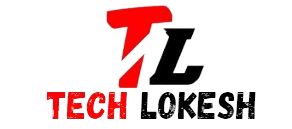The tech industry is not just evolving—it’s transforming at a pace that often feels faster than light. This rapid change isn’t limited to the technologies being developed; it extends to the very people who power these innovations. The workforce dynamics in tech are shifting, and with them, HR practices are being redefined. Businesses that want to stay ahead need to understand the top HR trends that are currently shaping the tech workforce. So, what are these trends, and how can they be leveraged to drive better outcomes?
Embracing Remote and Hybrid Work Models
If the past few years have taught us anything, it’s that work doesn’t have to happen in an office. The tech industry, with its digital-first mindset, was quick to embrace remote work, and many companies are now adopting hybrid models that blend remote and in-office work. This trend is here to stay, and it’s fundamentally reshaping the way businesses manage their workforce.
For tech companies, offering remote or hybrid work isn’t just about flexibility—it’s a strategic move to attract top talent from around the world. This shift requires HR teams to rethink everything from onboarding processes to how they foster company culture in a virtual environment. The challenge is to maintain a sense of community and collaboration, even when team members are spread across different time zones.
But remote work also comes with its own set of challenges. Ensuring that remote employees remain engaged and productive requires intentional strategies, such as regular check-ins, virtual team-building activities, and access to the right digital tools. By embracing these practices, companies can create a flexible work environment that appeals to the modern tech workforce while maintaining high levels of performance.
Prioritizing Employee Well-being and Mental Health
The tech industry is notorious for its high-pressure environments, where long hours and demanding projects can lead to burnout. In response, one of the most significant HR trends is the increased focus on employee well-being and mental health. Companies are recognizing that a healthy workforce is not just more productive but also more innovative and resilient.
To address this, tech companies are implementing comprehensive wellness programs that go beyond just offering gym memberships. Mental health resources, such as counseling services and stress management workshops, are becoming standard offerings. Additionally, flexible work hours and remote work options are being used to help employees achieve a better work-life balance.
Moreover, creating a supportive culture is crucial. HR teams are working to destigmatize conversations around mental health, encouraging employees to speak openly about their challenges and seek help when needed. This cultural shift is essential for building a work environment where employees feel valued and supported, which in turn leads to higher engagement and retention.
Leveraging Data-Driven HR Strategies
The tech industry is driven by data, and it’s no surprise that data-driven HR strategies are becoming a major trend. By leveraging data analytics, HR teams can make more informed decisions about recruitment, employee engagement, and performance management. This approach allows companies to identify trends, predict potential issues, and implement proactive solutions.
For instance, data can reveal insights into employee turnover rates, helping HR teams understand why employees are leaving and what can be done to improve retention. Similarly, performance data can be used to identify high-potential employees and tailor development programs to help them grow into leadership roles.
But data-driven HR isn’t just about numbers—it’s about using those numbers to create a better employee experience. By understanding what drives employee satisfaction and engagement, companies can design policies and programs that meet the needs of their workforce more effectively.
Tailoring Benefits to Meet Diverse Needs
As the tech workforce becomes more diverse, so do the expectations around benefits. Employees are no longer satisfied with a one-size-fits-all approach; they want benefits that cater to their individual needs and lifestyles. This has led to a trend of more customized and flexible benefits packages in the tech industry.
For example, self funded insurance plans are becoming more popular among tech companies. These plans allow businesses to offer more personalized health benefits, giving employees the flexibility to choose coverage that best suits their needs. This approach not only enhances employee satisfaction but can also be more cost-effective for the company.
In addition to health benefits, tech companies are also exploring new perks like student loan repayment programs, wellness stipends, and even pet insurance. By offering a range of benefits, companies can appeal to a broader demographic and create a more inclusive work environment.
Conclusion: Adapting to the Future of Work in Tech
The tech industry is constantly evolving, and so are the HR practices that support its workforce. By embracing remote and hybrid work models, prioritizing employee well-being, investing in continuous learning, leveraging data-driven strategies, and tailoring benefits to meet diverse needs, tech companies can create a work environment that attracts and retains top talent.
As these trends continue to shape the industry, businesses that stay ahead of the curve will be better positioned to succeed in an increasingly competitive landscape. The key is to remain agile, innovative, and responsive to the changing needs of the workforce, ensuring that HR practices evolve alongside the industry itself.

